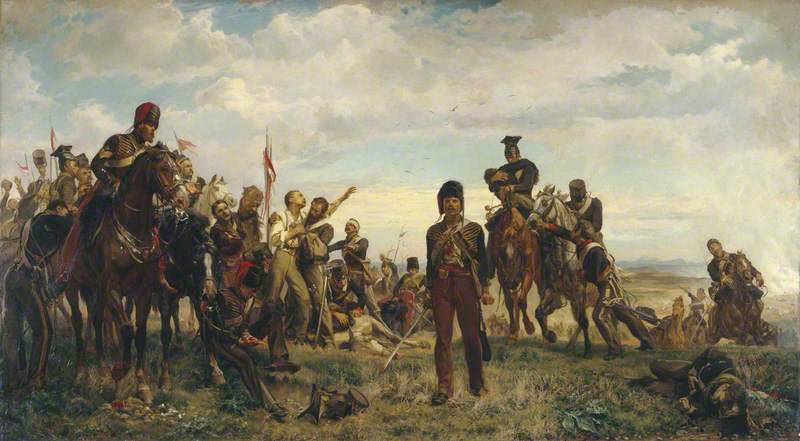Alfred, Lord Tennyson (1809-1892)
“The Charge of the Light Brigade” (1854)
Background
“Charge of the Light Brigade” was first published in The Examiner in 1854. Tennyson became Poet Laureate in 1850, and part of his function was to commemorate major national events. In 1854, during the Crimean War, a disastrous military engagement took place at Balaclava. The poem pays tribute to a brigade of valiant British soldiers, who obeyed their commander’s instructions to attack Russian troops. Unfortunately Lord Raglan’s orders were misinterpreted: the men were sent in the wrong direction, into ‘the jaws of Death’ and ‘the mouth of Hell’, resulting in a massacre. Tennyson’s pounding, relentless verse celebrates the soldiers’ heroism, and conveys the dramatic pace and sound of battle.
Background text is a derivative of “The Charge of the Light Brigade,” The British Library, and is licensed under CC BY 4.0.
Reading Questions
- How do meter and rhyme function in “Charge of the Light Brigade”? To what effect? To what purpose, do you imagine?
- What does it mean for this poem to be the final poem included in Tennyson’s first volume as poet laureate, Maud and Other Poems (1854)? If you have read Maud, what does it mean for these two poems to be bookends in the volume, since Maud was the first poem included?
- What kind of patriotic identity, patriotic ideals, does this poem espouse? Where are those idea(l)s challenged within the poem itself?
Recordings and Paintings
In 1888, Thomas Edison sent representatives to England to record Tennyson reading his poetry. The audio of “Charge of the Light Brigade” was captured on a wax cylinder. Listen to the recording here:
Usage: Public domain.



